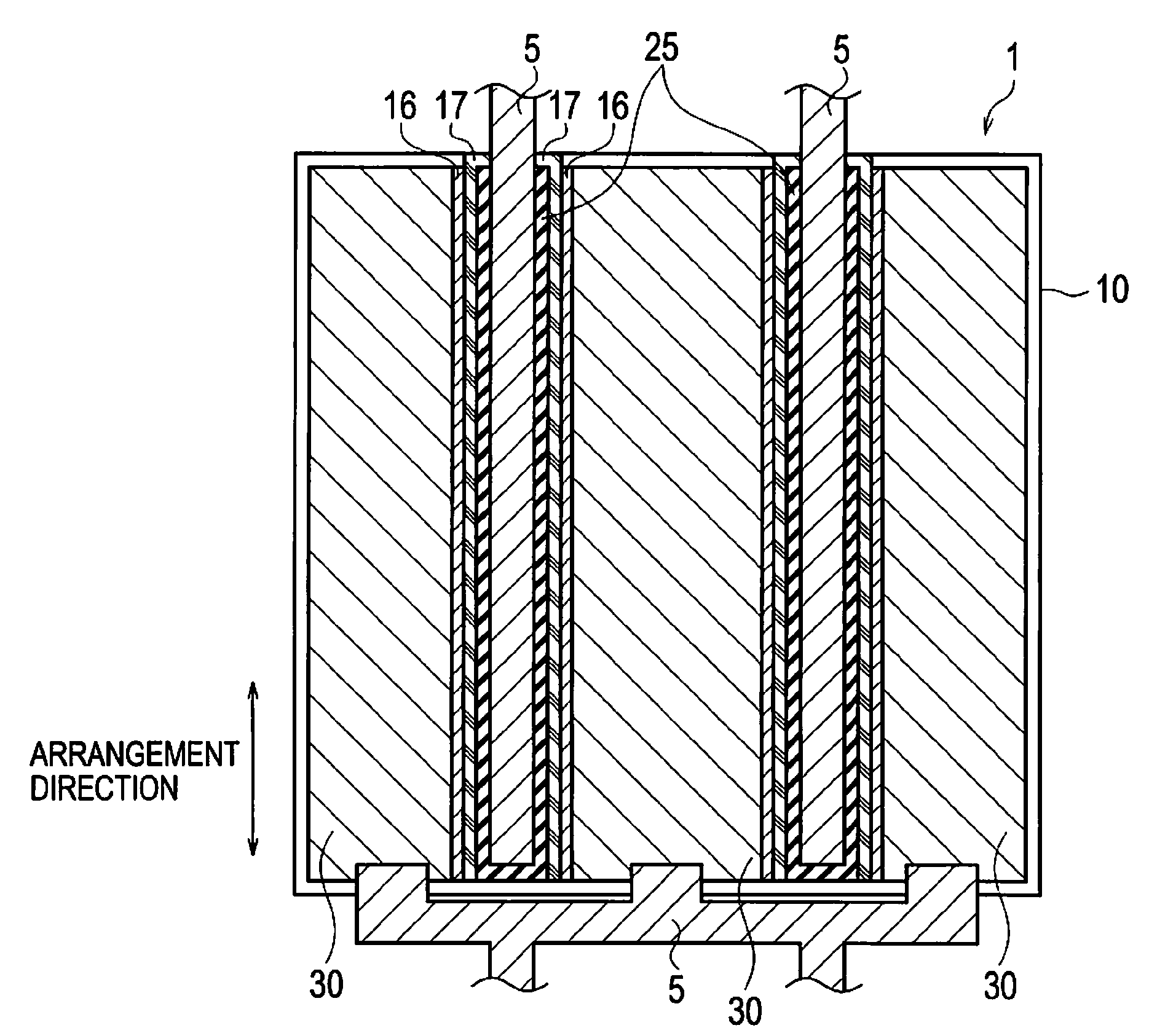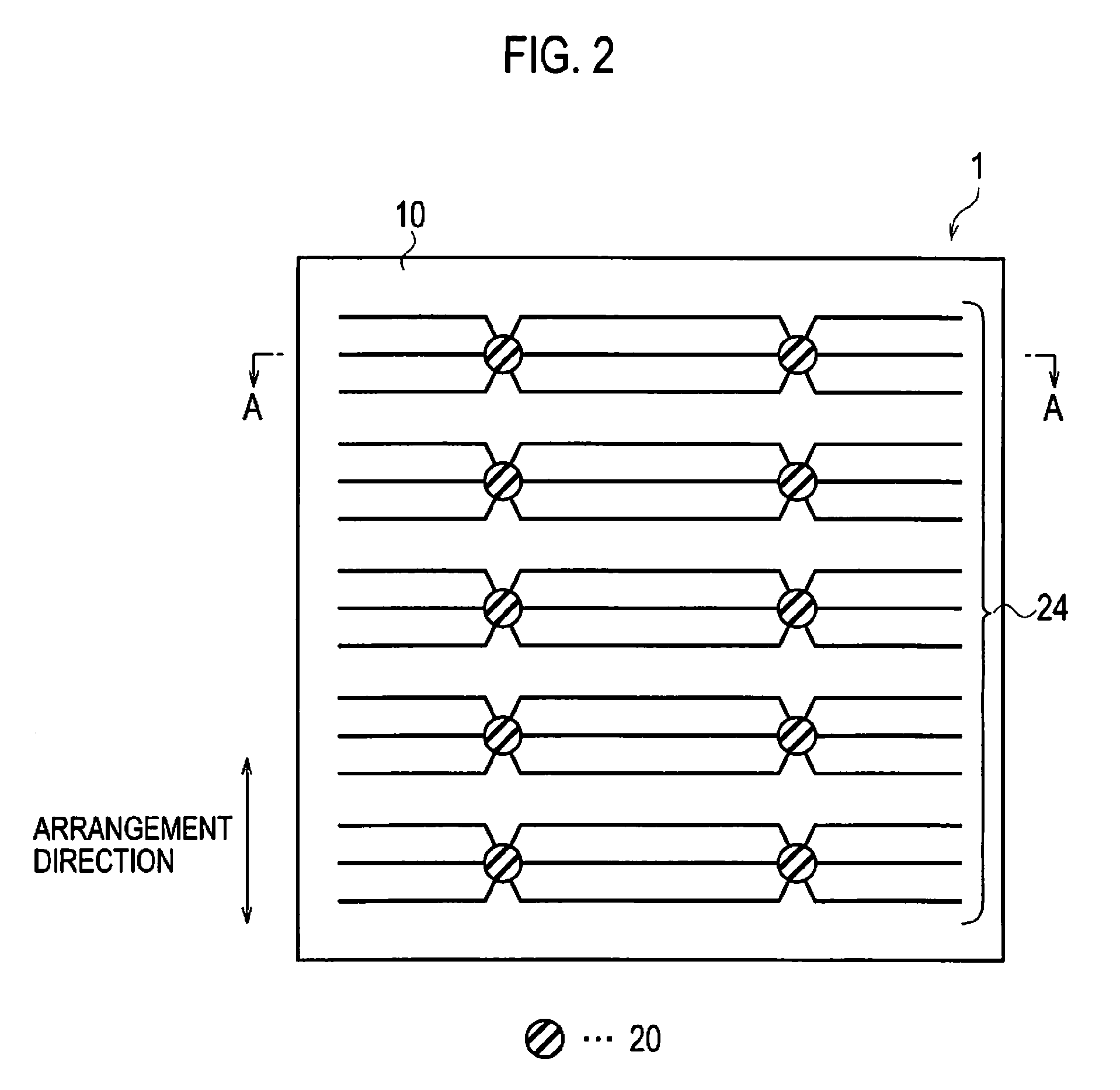Solar cell and a manufacturing method of the solar cell
a manufacturing method and solar cell technology, applied in the field of solar cells, can solve the problems of deteriorating output characteristics of solar cells, more likely to occur short circuits between substrates, etc., and achieve the effects of preventing relief structure, increasing etching rate, and high concentration
- Summary
- Abstract
- Description
- Claims
- Application Information
AI Technical Summary
Benefits of technology
Problems solved by technology
Method used
Image
Examples
first embodiment
1. First Embodiment
(Schematic Configuration of Solar Cell Module)
[0035]The schematic configuration of a solar cell module 100 according to the first embodiment of the present invention will be described with reference to FIG. 1. FIG. 1 is a side view showing the configuration of a solar cell module 100 according to the embodiment.
[0036]As shown in FIG. 1, a solar cell module 100 according to the embodiment includes a plurality of solar cells 1, a light-receiving-side protective member 2, a back-surface-side protective member 3, a sealing member 4, and a wiring member 5. The solar cell module 100 is formed by sealing a plurality of solar cells 1 between the light-receiving-side protective member 2 and the back-surface-side protective member 3 by using the sealing member 4.
[0037]The plurality of solar cells 1 is arranged in an arrangement direction. The plurality of solar cells 1 is electrically connected to each other through the wiring member 5. Each solar cell 1 has a light-receivi...
second embodiment
2. Second Embodiment
[0090]The second embodiment of the present invention will be described hereinbelow. The difference between the present embodiment and the forgoing first embodiment is that a (110) plane is exposed on the inner wall surface of the through hole, in this embodiment.
[0091]In the present embodiment, the schematic configurations of the solar cell module and the solar cell are the same as in the first embodiment. Accordingly, the difference from the forgoing first embodiment will mainly be described below.
(Configuration of Semiconductor Substrate)
[0092]The configuration of the n-type single-crystalline silicon 11 will be described with reference to FIG. 6. FIG. 6 is a perspective view of the n-type single-crystalline silicon 11 according to the present embodiment viewed from the light-receiving surface-side.
[0093]The light-receiving surface of the n-type single-crystalline silicon 11 is a (100) plane. As shown in FIG. 6, a textured structure is formed on the light-recei...
third embodiment
3. Third Embodiment
[0118]The third embodiment of the present invention will be described hereinbelow. The difference between the present embodiment and the forgoing first embodiment is that a semiconductor substrate mainly composed of polycrystal silicon is used in this embodiment.
[0119]In the present embodiment, the schematic configurations of the solar cell module and the solar cell are the same as in the first embodiment. Accordingly, the difference from the forgoing first embodiment will mainly be described below.
(Configuration of Photoelectric Conversion Part)
[0120]The detailed configuration of the photoelectric conversion part 50 of a solar cell la according to the present embodiment will be described with reference to FIG. 7. FIG. 7 is an enlarged cross-sectional view of the solar cell la according to the present embodiment.
[0121]The photoelectric conversion part 50 includes an n-type polycrystalline silicon substrate 51, a p-type polycrystal silicon layer 52, an anti-reflect...
PUM
| Property | Measurement | Unit |
|---|---|---|
| thickness | aaaaa | aaaaa |
| thickness | aaaaa | aaaaa |
| thickness | aaaaa | aaaaa |
Abstract
Description
Claims
Application Information
 Login to View More
Login to View More - R&D
- Intellectual Property
- Life Sciences
- Materials
- Tech Scout
- Unparalleled Data Quality
- Higher Quality Content
- 60% Fewer Hallucinations
Browse by: Latest US Patents, China's latest patents, Technical Efficacy Thesaurus, Application Domain, Technology Topic, Popular Technical Reports.
© 2025 PatSnap. All rights reserved.Legal|Privacy policy|Modern Slavery Act Transparency Statement|Sitemap|About US| Contact US: help@patsnap.com



